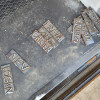Evidence is key to winning the grievance
Collect all the evidence you can, quantify it, make it trustworthy, and present it well for maximum impact
Arguing your grievance is like arguing a court case. You must have evidence to support your claims. Your evidence should be trustworthy, quantified, and positive. Many grievances (and court cases) are lost because the evidence is there, but it is not presented well enough to carry the argument.
In your research of your grievance, you will have collected evidence in the form of documents, records, photographs, and eye-witness testimony.
Testimony is the most common evidence provided at grievance hearings. Unfortunately, it is also the most difficult evidence to use successfully.
Use concrete evidence to back up testimony
Too often, grievances are argued entirely on the basis of testimony. You should always be on the lookout for ways to introduce concrete evidence, such as records, documents, and photographs.
Even one piece of concrete evidence can make a big difference. For example, you might have some very good testimony about a notice posted on the bulletin board, but you have a stronger case if you have a copy of the notice to show. Likewise, your witnesses might do an excellent job of describing an event, but a photograph of the location can help the arbitrator visualize where everything was and how things happened far better than any testimony.
Evidence carries more weight when it is trustworthy
To be trustworthy, a document must come from a reliable and knowledgeable source and must not show signs of being altered. For testimony to be trustworthy, the witness must sound credible.
Look at these two examples and ask yourself which one is more likely to seem trustworthy to an arbitrator.
Ex. 1: “Fred Johnson has over 200 documented hours of classroom training in Hazardous Waste Disposal, and holds three certificates, including a Class 1 A. This information is available in his personnel file.”
Ex. 2: “My ol’ partner Fred can shovel more horse hockey drunk than most S.O.B.s can shovel sober, and I should know ’cuz me and him have been drunk on our tails in just about every town we ever spent time in.”
The first statement would probably sound more trustworthy to an arbitrator. Another way to say that is to say that the first statement is made in a more professional manner and uses quantifiable facts as evidence, not judgments or appeals to emotion.
Evidence carries more weight when it is quantified
Numbers are persuasive. Saying that a person is “tall” is vague. “Tall” may not mean the same thing to you as it does to me. Saying that same person measures six feet, nine inches in height gives a much clearer picture of what you mean by “tall.”
Absenteeism, seniority, written reprimands, education, training, and past experience are examples of evidence that can be quantified. You can count the number of absences a person has, or the years of seniority, or the years of experience on the job.
Ability, aptitude, personality, character, dependability, friendliness, and professionalism are terms that cannot be quantified. As much as possible, avoid using terms that cannot be quantified. If you must do so, back them up with quantified facts.
For example, saying, “Joe is dependable” is not very persuasive. It is your judgment of one of Joe’s personal traits, and the arbitrator has no way of knowing what you base your judgment on.
If you add, “Joe has worked seven years at this job with only four absences, and his work has never failed a quality control inspection,” then the arbitrator has a much clearer picture of Joe’s dependability.
Positive evidence is more persuasive than negative
Negative words and words with negative connotations often make testimony sound biased or combative. Testimony should always focus as much as possible on what happened, not what did not happen. In addition, testimony should avoid words that are provocative or inflammatory.
Take a look at these two different descriptions of the same event.
Ex. 1: “I was present in the locker room during the entire argument between Len and his supervisor. I was seated next to Len on the same bench. The supervisor came in and began to talk with Len about a job Len had just finished in the shop. They got to hollering at one another, but Len never hit, struck, or swung at the supervisor.”
Ex. 4: “I was in the locker room during the fight between Len and the supervisor. I was minding my own business because I don't like trouble, so I didn't say anything. Len and the supervisor were hollering and cussing pretty loud, and I was thinking they would come to blows at any minute, but Len never hit or took a swing at the supervisor or anybody.”
In the first statement, the individual clearly states the facts as he saw them. He is sure about what he saw, where he was, and everything that happened. Although he points out something that did not happen (“Len never hit”), he leaves that part of the description to the end of his testimony. His first three-and-a-half sentences are positive statements about what did occur, without any interpretation on his part.
In the second statement, the individual uses some loaded words. He begins by using the word “fight,” implying fists were thrown, even though he later says Len never hit anyone. He uses the negative phrase “I don't like trouble,” implying that maybe Len doesn’t mind getting into trouble. He also interjects his thoughts about the motives of others (“I was thinking they would come to blows”). What he was thinking might happen is of no consequence. Testimony should always stick to the facts of what actually did happen, not the witnesses’ thoughts.





